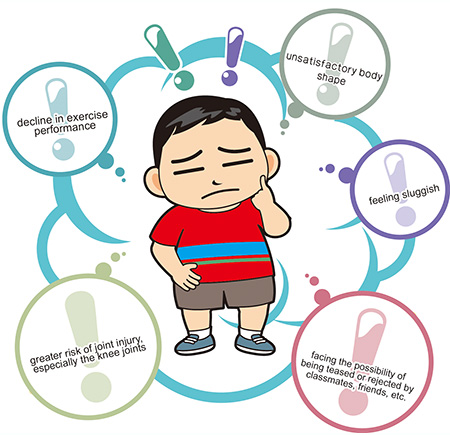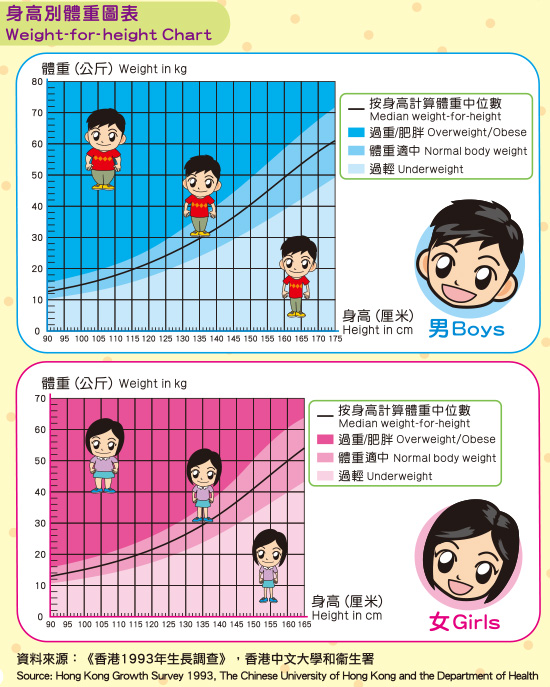 Leisure and Cultural Services Department - Healthy Exercise for All CampaignLeisure and Cultural Services Department
Leisure and Cultural Services Department - Healthy Exercise for All CampaignLeisure and Cultural Services Department
Fitness Programmes for Children
Points to Note for Parents:
Body weight of Hong Kong children
According to the findings of the “Territory-wide Physical Fitness Survey for the Community”, almost a fifth of the children in Hong Kong were overweight or obese, and more than 60% of children did not meet the physical activity level recommended by the World Health Organization , i.e. an average of at least 60 minutes of moderate-to-vigorous physical activity per day throughout the week. Similarly, statistics of the Student Health Service of the Department of Health for school year 2018/19 also revealed that about one in five primary students were overweight or obese. These findings indicate that children in Hong Kong do not have sufficient physical activities. Parents should encourage their children to exercise regularly in order to develop a healthy lifestyle and maintain desirable body weight by proper means.
Why should we manage our body weight?
Being overweight may lead to the accumulation of excess fat, which in turn increases the risk of diseases such as hypertension, cardiovascular disease, diabetes, gall stone and some types of cancer (e.g. colorectal cancer).
| Other problems of being overweight: |
 |
How to define overweight / obesity?
| A. | A ratio of weight to height can be used to assess whether a person is overweight / obese or not. Definition of overweight / obesity: Body weight being 20% higher than the median of the "weight for height". |
| Weight-for-Height Chart | |
| |
The Weight-for-Height Chart is an instrument to assess if the weight is proportional to the height of a child. For boys taller than 175 cm and girls taller than 165 cm or individuals aged 18 or above, please use Body Mass Index (BMI) to assess your weight sataus.
| B. | Checking the Weight-for-Height Chart is one of the methods to determine whether a person is underweight or overweight. However, measuring the level of subcutaneous fat and assessing the percentage of body fat using a bioelectrical impedance analyser are more accurate methods of assessment in the following situations: |
| 1. Children who exercise regularly have more muscles and less fat. They may be overweight but healthy. | |
| 2. Some children who are not overweight may have muscle mass that is way below standard and body fat far higher than the normal level. They are considered obese despite having a normal body weight. |
Acknowledgements:
Physical Fitness Association of Hong Kong, China
Physiotherapy Department, Prince of Wales Hospital

